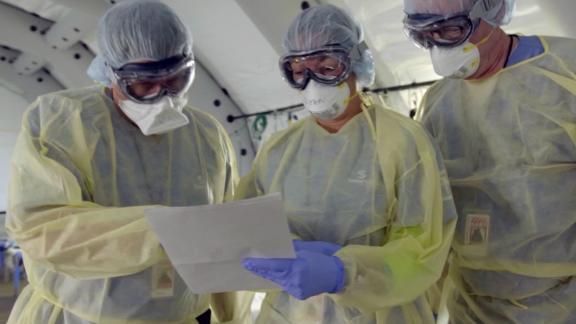California could see 100,000 hospitalizations in January

SACRAMENTO, Calif. (AP) California has recorded half a million coronavirus cases in the last two weeks and could have nearly 100,000 hospitalizations in the next month.
Gov. Gavin Newsom acknowledged Monday that a state projection model shows hospitalizations in that range and that he’s likely to extend his stay-at-home order for much of the state.
Dr. Mark Ghaly, California’s secretary of Health and Human Services, said the state fears some hospitals “may go beyond the existing surge capacity that they currently have planned.”
In response, the state is updating its planning guide for how hospitals would ration care if everyone can’t get the treatment they need, Ghaly said. It still hopes to avoid reaching that stage by beefing up staffing, makeshift hospitals and mutual aid with regions that might have precious remaining beds.
Some of the cases heading inevitably toward overtaxed hospitals are already in the pipeline based on the 525,000 cases the state has recorded in the last two weeks. A projected 12% are likely to wind up in the hospital — 63,000 people.
Newsom gave Monday’s briefing from his home as he began a 10-day quarantine Sunday for the second time in two months after a staff member tested positive for the virus.
Newsom was tested and his result came back negative, as did the tests of other staffers who were in contact with the person.
Last month, members of the governor’s family were exposed to someone who tested positive for the virus. Newsom, his wife and four children tested negative at that time.
As of Sunday, more than 16,840 people were hospitalized with confirmed COVID-19 infections — more than double the previous peak reached in July.
More than 3,610 COVID-19 patients were in intensive care units. All of Southern California and the 12-county San Joaquin Valley have exhausted their regular intensive-care capacity, and some hospitals have begun using “surge” space. Overall, the state’s ICU capacity was just 2.1% on Sunday.
The explosion of cases in the last six weeks has California’s death toll climbing. Another 161 fatalities reported Sunday raised the total to 22,593.
In hard-hit Los Angeles County, Nerissa Black, a nurse at Henry Mayo Newhall Hospital, estimated she’s been averaging less than 10 minutes of care per patient every hour. That includes not just bedside care, but donning gear, writing up charts, reviewing lab results and conferring with doctors, she said.
“And the patients who are coming in are more sick now than they’ve ever been, because a lot of people are waiting before they get care. So when they do come in, they’re really, really sick,” Black said Sunday.
The governor has said California is experiencing “some of the darkest days of our COVID-19 surge,” but there was some light Sunday as a second vaccine got the greenlight, this one from Moderna. The step clears the way for the drug to be distributed throughout California and other Western states. Doses of the first vaccine, by Pfizer, are already being administered to California medical workers.
Until vaccinations become widespread, hospitals are preparing for the possibility of rationing care. A document recently circulated among doctors at the four hospitals run by Los Angeles County calls for them to shift strategy: Instead of trying everything to save a life, their goal during the crisis is to save as many patients as possible. That means those less likely to survive won’t get the same kind of care offered in normal times.
“Some compromise of standard of care is unavoidable; it is not that an entity, system, or locale chooses to limit resources, it is that the resources are clearly not available to provide care in a regular manner,” the document obtained by the Los Angeles Times reads.
The county’s Health Services director, Dr. Christina Ghaly, said they were essential to develop given that the surge has arrived and “the worst is yet to come.”
Many hospitals already have implemented emergency procedures to stretch staff and space.
Corona Regional Medical Center southeast of Los Angeles has converted an old emergency room to help handle nearly double the usual number of ICU patients. It’s using space in two disaster tents to triage ER patients because the emergency room is filled with patients who need to be hospitalized.
In hard-hit Fresno County, a new 50-bed alternate care site opened recently near the community Regional Medical Center. The beds for COVID-19-negative patients will free up space in area hospitals, where just 13 of some 150 ICU beds were available Friday, said Dan Lynch, the county’s emergency medical services director.
Lynch said he expects they will have to use the Fresno Convention Center, which can accommodate up to 250 patients.
Fresno and three neighboring counties also have taken the unprecedented step of sending paramedics on emergency calls to evaluate people. They won’t be taken to the emergency room if they could go to an urgent care facility or wait a few days to talk to their doctors, Lynch said.
Some hospitals have canceled nonessential elective surgeries, such as hip replacements, that might require beds that may soon be needed for COVID-19 patients. Others are increasing staff hours or moving patients to free up space.